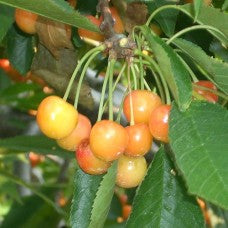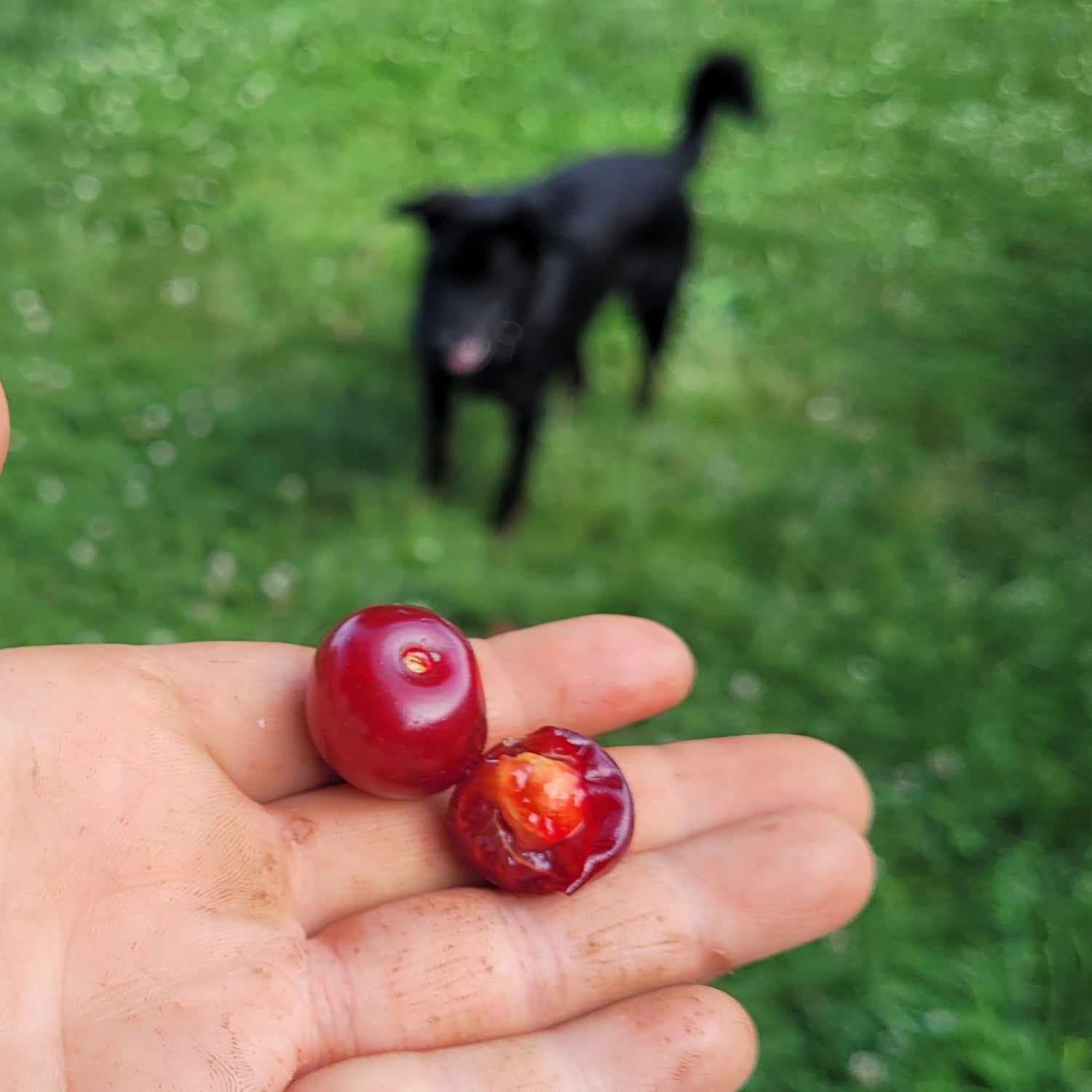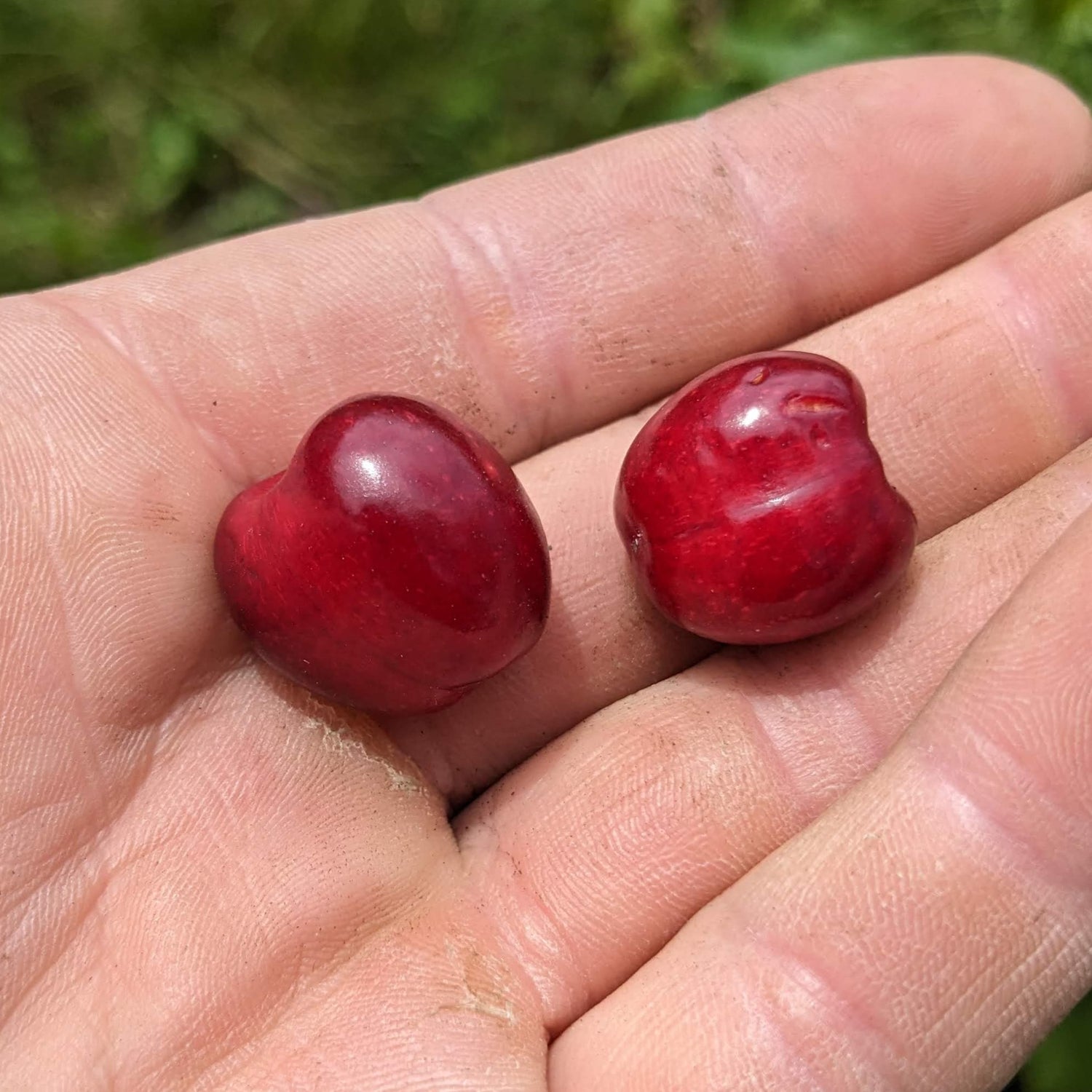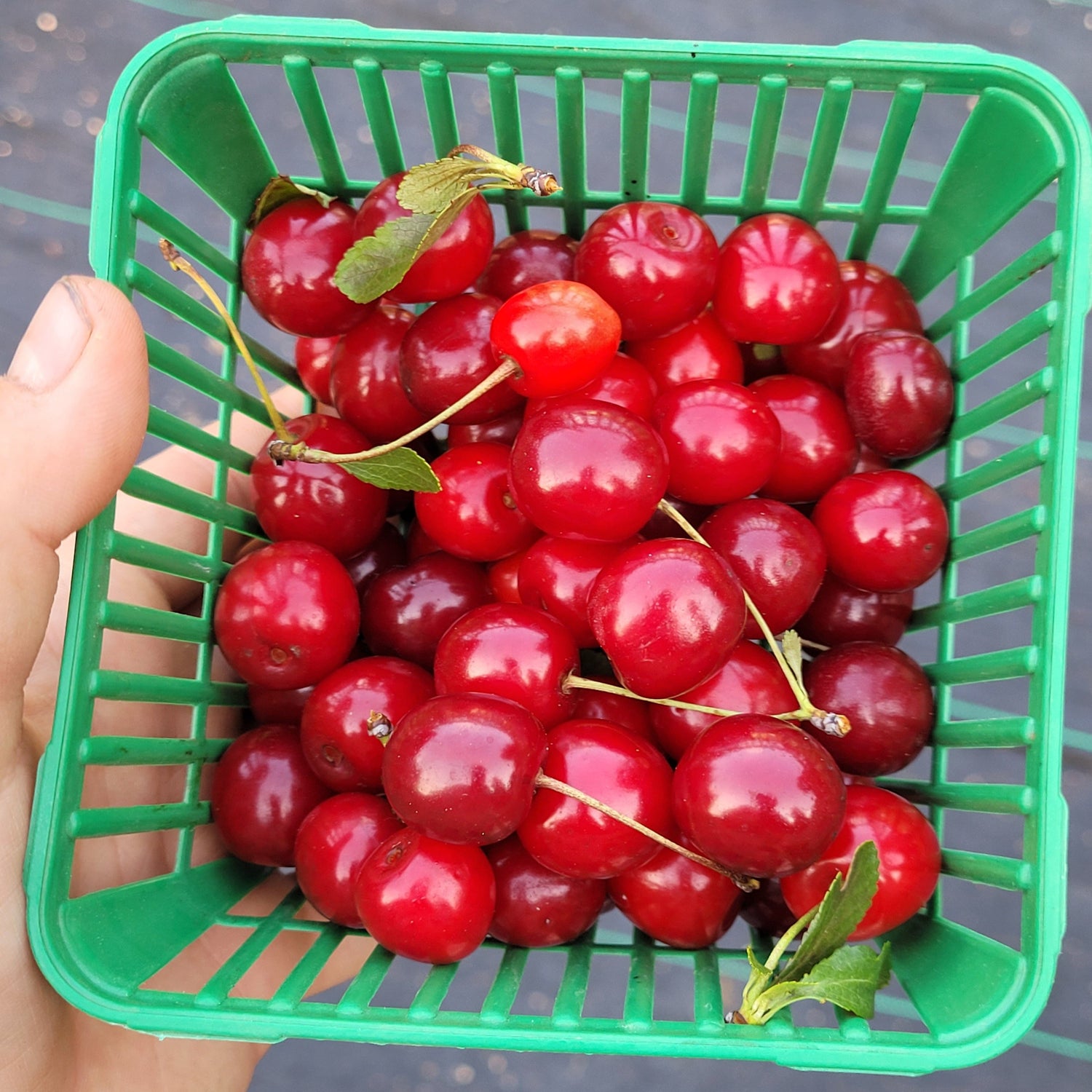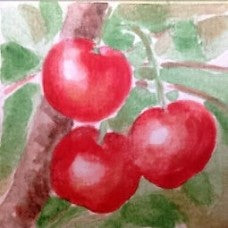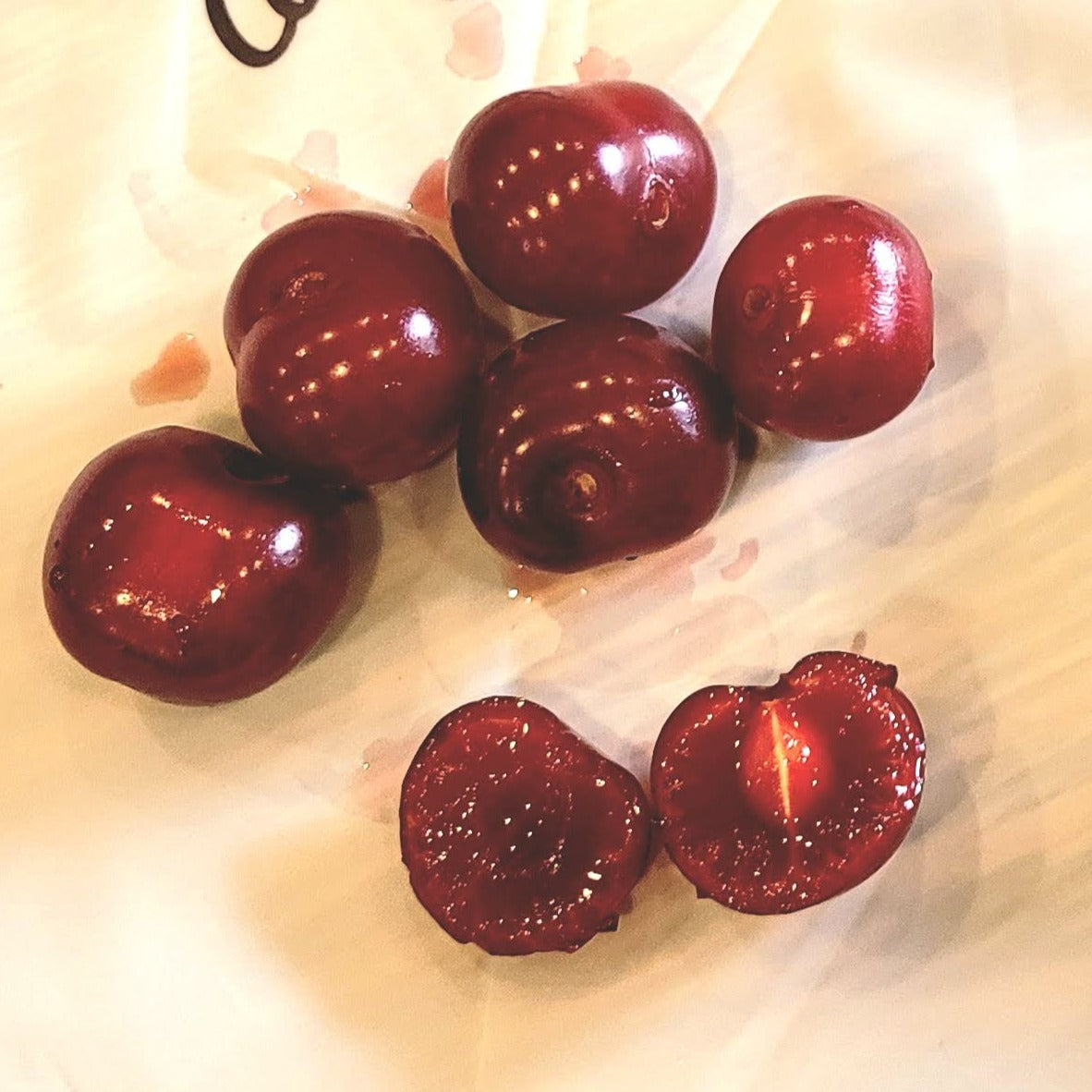Cherry Trees
Whether you're dreaming of juicy summer cherries straight from your backyard or want to add ornamental beauty to your garden, cherry trees are a rewarding addition. Both sweet cherries (Prunus avium) and sour cherries (Prunus cerasus) have unique flavors, uses, and care needs. Here's what you need to know to grow them successfully.
Sort by:
36 products
36 products
Available only for pick-up at nursery.
History: Rainier sweet cherries were created by Harold Fogle at the Washington State University research center in 1952 and released in 1960. They were named after Mount Rainier, the tallest mountain in the state. Due to their delicate nature, Rainier cherries tend to be a bit more expensive than other commercial varieties.
Why We Grow It: Rainier are delicious yellow-skinned, yellow-fleshed sweet cherries. Some say they are the best tasting of all yellow cherries, and perhaps the best tasting cherry in general. Along with being great for fresh eating, they are also suitable for uses such as canning.
Species: Prunus cerasus
History: These sour cherry seedlings are grown from Juliet seeds we've collected here at Silver Creek Nursery from our own trees! Juliet, is one of the members of the Romance Series released in 2004 from the University of Saskatchewan.
Why We Grow It: Seedling fruit trees are a great way to add some diversity and mystery to your garden or orchard! The parent variety, Juliet, has a sweet/tart flavour that some enjoy for fresh eating and is great for processing. A naturally dwarfing and bush-like variety. For a full description, see our Juliet page here.
Please Note: Since sour cherries tend to stay true to type more than apples, these seedlings will likely bear a strong resemblance to their parent variety. However, any specific information listed on this page should be taken with a grain of salt as there may be some variation from the parent tree.
Available only for pick-up at nursery.
History: Oops, we had an inventory mishap and don't know what variety these sweet cherries are! We're happy to offer these wonderful plants at a discount to any adventurous growers who don't mind a bit of mystery. These will be full-size sweet cherry trees.
Why We Grow It: While we don't know what variety these trees are, they'll certainly produce a deliciously sweet cherry that is a great summer treat! We recommend these mystery trees for customers with plenty of space since sweet cherries get quite tall and who already have sweet cherries on or near their property. Since these are mystery trees, we do not know if they require a pollination partner to produce fruit.
Available only for pick-up at nursery.
History: Oops, we had an inventory mishap and don't know what variety these dwarf sour cherries are! We're happy to offer these wonderful plants at a discount to any adventurous growers who don't mind a bit of mystery. They will be one of the Romance Series of dwarf sour cherries released from the University of Saskatchewan.
Why We Grow It: Dwarf sour cherries are self-pollinating and relatively compact, making them a great option for anyone with limited space! These productive bushes produce ample amounts of bright red sour cherries that are great for baking, preserving, etc. The bushes are also showy in the spring when covered in white blossoms and are quite cold hardy.
Check our our blog post with some tasty sour cherry recipes!
Available only for pick-up at nursery.
History: Van was developed at the Summerland Research Station in BC and was the first variety released by their breeding program. It originated as an open-pollinated cross with Empress Eugenie in 1936 and was introduced in 1944. Van was named after J.R. Van Haarlem, a pomologist at the Horticultural Experiment Station in Vineland, ON. The variety initially enjoyed great popularity, but has faded out of commercial favour since it is not self-pollinating. It can still be found being grown on a small scale and in backyards.
Why We Grow It: Van produces firm, dark red cherries with an excellent flavour similar to Bing. They have a sweet/tart flavour that makes them great for both fresh eating and baking/cooking. The tree itself is vigorous, hardy, starts bearing fruit at a young age, and produces heavy crops. It also flowers prolifically, making it a lovely tree in the spring and a great pollination partner for other sweet cherries.
Available only for pick-up at nursery.
History: Bing sweet cherries originated near Salem, Oregon in 1875 as a cross between Black Republican and another sweet cherry variety. It was named after Ah Bing who worked as a nursery foreman for Seth Lewelling, the person who made Bing cherries into the top variety in the US. It is uncertain if Ah Bing himself developed the variety or if Lewelling simply named it after him as thanks for the 35 years he worked for him.
Why We Grow It: There are many reasons why this classic black sweet cherry has become the most commonly grown cherry in the US and the standard by which all other sweet cherries are measured. It produces large heart-shaped fruit with meaty purple-red flesh that is juicy and sweet. It has a semi-cling stone that is easy to remove, making it great for fresh eating and preserves. The tree is a heavy cropper, producing bountiful amounts of these lovely sweet cherries.
Collections
Prunus avium
Sweet cherries provide lovely sweet treats that are best enjoyed right off the tree! These tall trees are also quite attractive in spring when covered in a profusion of lovely white flowers.
Some sweet cherries are self-pollinating and some need two different varieties for pollination - we have noted which is which in the variety descriptions. Otherwise, two different varieties are required. Sweet cherries and sour cherries do not pollinate each other.


